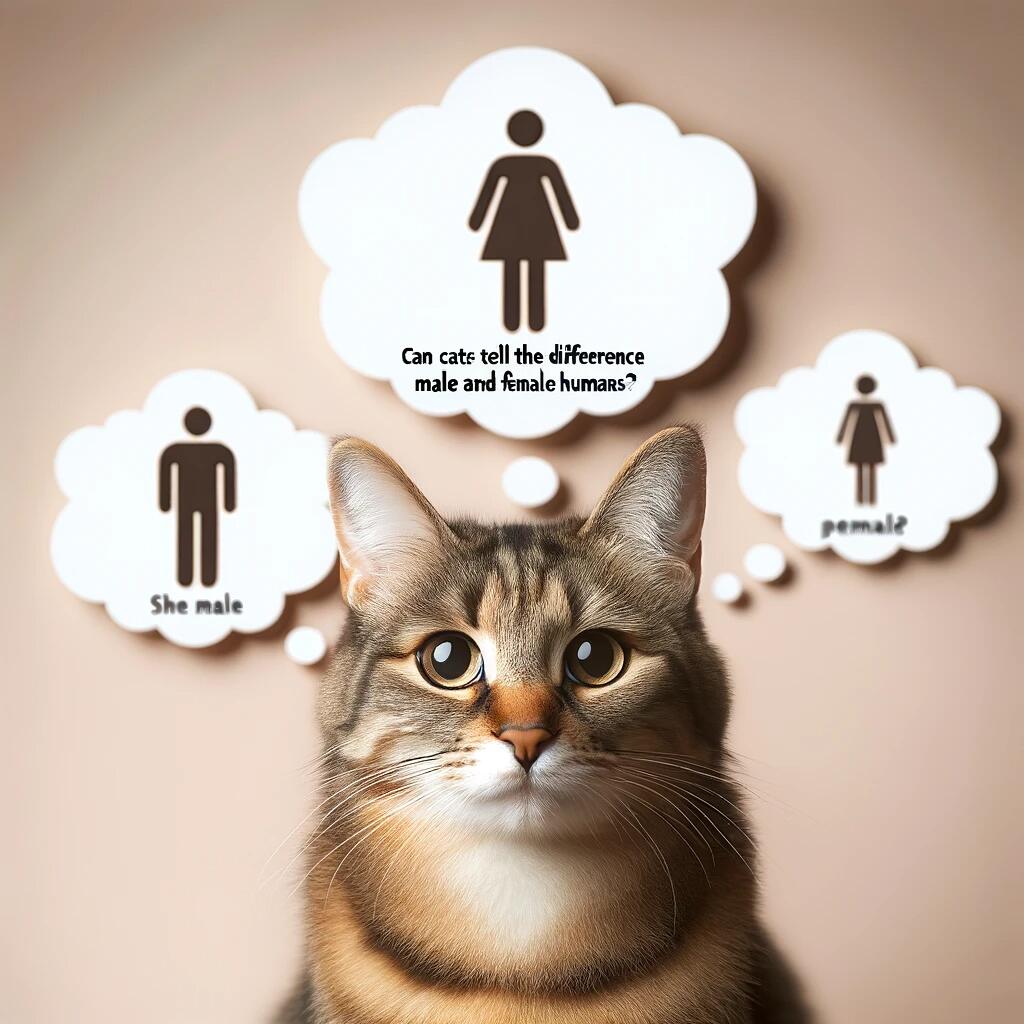Physical Address
304 North Cardinal St.
Dorchester Center, MA 02124


Cats have been our furry companions for thousands of years, and their ability to understand and interact with humans has always been a topic of fascination. While we know that cats are highly perceptive animals, can they discern between male and female humans?
Yes, cats possess the ability to distinguish individuals by sight, similar to humans. They can discern differences based on size, body shape, facial features, and even the sound of one’s voice. Moreover, all animals are capable of recognizing dominance through observed behaviors after spending time with other animals or humans. This skill allows them to adapt and interact effectively within their social environments.
This question has piqued the curiosity of cat owners and researchers alike, leading to numerous studies and anecdotal observations. In this article, we will explore the intriguing world of feline perception and delve into the question of whether cats can tell the difference between male and female humans.
Before delving into the specifics of cats’ ability to differentiate between male and female humans, it’s essential to understand the fascinating world of feline perception. Cats are known for their acute senses, which play a crucial role in their daily lives.
Given these remarkable sensory and perceptual abilities, it’s reasonable to explore whether cats can discern between male and female humans. Let’s delve deeper into this intriguing topic.
The sense of smell is incredibly important to cats, as it plays a central role in their communication and perception of the world around them. When it comes to detecting gender differences in humans, cats might rely on the distinct scents associated with males and females.
While these factors suggest that cats might have the ability to differentiate between male and female humans based on smell, there is limited scientific research in this specific area. More studies would be needed to determine the extent of a cat’s olfactory discrimination abilities related to human gender.
Cats have remarkable hearing abilities, including the capacity to detect subtle differences in pitch, tone, and volume. Human voices can vary significantly between males and females, which leads us to wonder if cats can recognize these auditory distinctions.
Research into whether cats can differentiate between male and female voices is limited, and most studies focus on their response to specific sounds, rather than gender-related auditory discrimination. However, anecdotal evidence from cat owners suggests that cats may indeed react differently to the voices of males and females in their households.
Cats are incredibly perceptive when it comes to body language and behavior. They pay close attention to non-verbal cues, which can provide valuable information about an individual’s intentions and emotions. While cats may not directly discern gender based on these cues, they can form unique associations with the people they interact with regularly.
The ability of cats to differentiate between male and female humans may also be influenced by their socialization experiences during their early development. Kittens learn about the world around them through exposure to various stimuli, including human interactions. These early experiences can shape their perceptions and reactions to different people.
Overall, socialization and early experiences are crucial factors that can influence a cat’s perception of and behavior toward different individuals, including males and females. Gender may play a role in these experiences, but it is just one of many factors that contribute to a cat’s response to humans.
While scientific research on this topic remains limited, many cat owners have shared anecdotal evidence and observations regarding their cats’ responses to different genders. These stories provide interesting insights into how cats may perceive male and female humans.
It’s important to note that these anecdotal accounts can vary widely, and not all cats will exhibit gender-specific preferences. Additionally, individual cat behaviors may be influenced by a multitude of factors beyond gender, including personality, socialization, and past experiences.
The question of whether cats can tell the difference between male and female humans is a fascinating one that highlights the complexity of feline perception. Cats possess remarkable senses of smell, hearing, and observation, which allow them to pick up on subtle cues in their environment and the people they interact with.
While there is limited scientific research on this specific topic, anecdotal evidence suggests that cats may respond differently to males and females based on individual experiences and preferences. However, it’s essential to remember that gender is just one of many factors that can influence a cat’s behavior and perception of humans.
Ultimately, cats form unique bonds with their caregivers and respond to them based on trust, familiarity, and positive experiences. Whether you are a male or female cat owner, the key to a strong and positive relationship with your feline friend lies in providing love, care, and attention, regardless of your gender.
As we continue to explore the intricate world of feline perception, it’s clear that there is much more to learn about our beloved companions and their ability to understand and connect with us. Whether or not cats can definitively tell the difference between male and female humans, one thing is certain: the bond between cats and their human caregivers is a special and enduring one.





